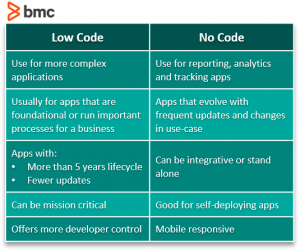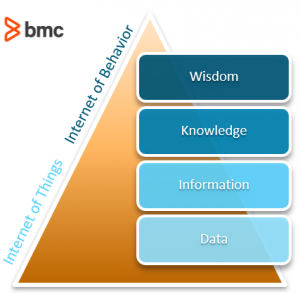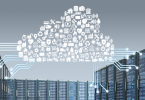Software development is constantly evolving, thanks to a variety of changes and improvements in the software development lifecycle (SDLC), such as:
- The constantly changing technological landscape
- New consumer and business demands
- Market trends
A technology that is prominent today may quickly become obsolete. If we look at the current software development process, many significant trends are changing how we develop, deploy, and manage software and the platforms to develop for.
In this post, let’s discuss some trends in software development that will have a high impact on the broad IT industry.
Low-code & no-code software development
This concept might seem contradictory: after all, coding is the basis of software development.
However, software development is increasingly complex, and the need to deliver software faster never slows. This has put software development teams under constant pressure and made new talent reluctant to enter such high-pressure environments.
Exactly for these reasons have low-code and no-code products quickly gained popularity across the software development field.
Importantly, low-code and no-code tools and platforms will never replace actual coding in software development—someone needs to develop them. But more people are getting on board with the benefits they bring:
Low-code and no-code options can be utilized to complement software development pipelines by allowing users to develop, deploy, and manage some parts of software solutions and delivery pipelines. Another advantage? Lowering the barrier to enter the software development field and helping to attract new talent.

Big data security
Big data and data science have become the norm in the IT industry, with data the cornerstone of any business.
Software development has evolved to cater to big data needs from collecting, storing, and analyzing data. With the increased scrutiny on big data by users, regulatory bodies, and governments, securing all this collected data has become the number one priority for any organization.
This need, in turn, has led to integrating security as a fundamental component. It requires integrating security particles from the beginning of the development in any software that interacts with data. With the rise of the “data as a service” platform and continuous internet threats, big data security will become the next major trend.
DevSecOps
DevOps has changed the way we develop software leading to more agile and faster software developments while also improving the overall quality of software. However, as the cloud has become central to most software developments, along with increased reliance on the internet to deliver software, the threats for software may also increase.
All these facts have led to the inability of security teams to keep up with the rapid pace of the software development and delivery process.
In contrast, DevSecOps has integrated security into every nook and cranny of the software development process, with security teams constantly monitoring all aspects of the DevOps process. This integration of security as a first-class citizen in the SDLC leads to more secure software. Hence, DevSecOps will supplant DevOps as the standard operating process for most development teams in the coming years.
(Compare SecOps to DevSecOps.)
Increasing reliance on artificial intelligence
AI has already become a core component in most software, from simple computer vision applications to enterprise-scale predictive analytics. Making huge gains in recent years, artificial intelligence seems to eye no end to this expansive growth.
As most narrow AIs have become intelligent enough to completely replace humans in most aspects, AI that can match human intelligence may become a reality in the next decade.
AI coupled with neural networks and machine learning software is changing from static pieces of logic to self-learning and evolving entities. This will change how software is developed. Most developments will shift from creating static logic to creating algorithms that can learn and evolve to meet changing end-user requirements.
(Compare AI to machine learning.)
Augmented reality, virtual reality & mixed reality
While AR, VR, and MR seem to have stagnated in recent years, the reality shows constant progress in all three technologies. With most consumers craving new experiences, these technologies will fundamentally change how we see and interact with the world.
Augmented reality (AR)
This can be the most widely used technology as it has applications across most industries, from eCommerce to changing the way users shop to navigation with AR-powered GPS apps.
AR can become a core part of the user experience with more and more reliance on digital technologies. All this equates to software developments targeted at AR. Furthermore, AR development is quickly gaining momentum with tools like ARCore and ARKit from Google and Apple.
(Experience the AR cloud.)
Virtual reality (VR)
When thinking of VR, gaming immediately comes to our mind—because that’s its big use case.
VR can offer an unparalleled user experience, immersing you in entirely virtual worlds from a first-person perspective. You can be exploring a distant planet now and, in the next second, exploring the deepest trenches in the ocean, all in the comfort of your home.
However, most of us forget that VR has applications far beyond gaming—applications that can change education and other entertainment sectors, in particular. Students can get hands-on experience in a virtual world and even watch VR-based movies. Virtual reality-based software developments will be widespread thanks to two new developments:
- Dedicated tools like Amazon Sumerian and Google VR
- Lower VR hardware costs
Mixed reality (MR)
MR is the bridge between reality and digital worlds—it’s the platform that bends the digital with the physical. Mixed reality has the potential to fundamentally change how we interact with the physical world.
Companies like Microsoft backing MR with products like Hololens have laid the groundwork for MR becoming the next big thing.
Progressive web apps
With the continuous growth of mobile and web-based applications, developing and maintaining separate applications for both platforms may become an unnecessary burden.
PIA or Progressive Web Apps can enable developers to create mobile-focused versions of their web-based applications using web-based languages like JavaScript, CSS, and HTML that serve through mobile browsers yet provide a native app-like experience.
Who should use this option?
- This can be an excellent option for smaller development teams who want to attract a mobile user base without dedicating resources to mobile development.
- Enterprises can also leverage this option to provide a near-native user experience across multiple platforms via a streamlined web-based PIA.
Growth in IoT
The Internet of Things is ever-expanding, with billions of smart devices powering many industries across the world, ranging from simple home appliances to medical devices. Thus, more and more software will be developed targeting these IoT devices. This will lead to an even tighter relationship between cloud and IoT technologies—after all, most IoT devices rely on distributed and cloud-based technologies across their lifecycle.
(See how IoT spurs the internet of behaviors.)

Increased emphasis on UI/UX
The increased reliance on digital services and experience has put a spotlight on user interfaces and user experience.
Traditionally, most software developments gave priority to the application logic and backend services without much consideration on UI or UX. This has changed rapidly, driven by increased demand for user-friendly and novel user experiences. In this way, UI/UX will come to the forefront of the software development process and might even lead to situations where UI/UX determines how application logic is implemented.
Serverless computing
Cloud has fundamentally changed how software is deployed and delivered. Now, the new serverless computing paradigm is further evolving by eliminating any infrastructure management requirements and allowing developers to create solutions that can be directly deployed in these serverless environments. Some even support the direct deployment of containers all serverless.
This will undoubtedly change how software is developed and should lead to even faster development lifecycles.
Blockchain technology
Blockchain changed how we look at transaction recording. First popularized by digital currencies, blockchain quickly became popular in the finance sector as a decentralized digital ledger to record transactions securely. This decentralized nature and the ability to store any type of data make it one of the most secure technologies available.
This has led to an explosion in blockchain technology being utilized in other sectors such as:
- Logistics
- Publishing
- Healthcare
- Etc.
More sectors, of course, means more software products using blockchain in some capacity. Services like Amazon-managed Blockchain allow leveraging the power of the cloud to create blockchain-based software solutions in software development.
Cloud-based CI/CD
Continuous Integration and Continuous Delivery are the basis for automation in any SDLC. With the increased reliance on the cloud, cloud-based CI/CD solutions are quickly gaining popularity, even resulting in creating complete cloud-based software development pipelines. These managed CI/CD solutions will only grow in popularity as they will further reduce the management overhead and even lead to cost savings.
In the next few years, more and more software developments will be powered by cloud-based CI/CD tools utilizing other cloud-based solutions, such as:
- Code repositories
- Planning and management tools
- Test suites
- Etc.
Multi-cloud architectures
Many organizations rely on a single cloud provider to power their applications. However, multi-cloud architectures are becoming increasingly popular—allowing developers more freedom to mix and match different services from multiple providers to suit their exact needs without being locked into a single platform.
Multi-cloud service providers like HashiCorp will become prominent players in this sector by offering tools to manage infrastructure, applications, and networking across cloud providers. All these things will change software developments from targeting a single platform to a more platform-agnostic development style.
Rise of modern programming languages
Programming languages like Python and Java still dominate in the field of software development. However, some modern languages have emerged to challenge these existing goliaths by offering new features and native support for new technologies. They even provide solutions for existing issues, offering a better development experience for developers.
Languages like Rust, Go, Kotlin, and TypeScript will become mainstream and may replace established languages like C/C++, Java in most use cases. Kotlin has already replaced Java in the mobile development landscape, while TypeScript is becoming favored in projects like Vue.js.
(Explore popular programming languages.)
Cloud-native application development
With the unstoppable growth in cloud services, almost all software will be using some kind of cloud service in the next decade, with most software explicitly designed for cloud-based environments. This way, cloud-native application development will become the standard practice in the future.
The software will be naturally evaluated to be deployed and managed in the cloud as fully online solutions due to most software development tools and services also moving to the cloud. In some sense, this has already happened, yet this trend will only intensify with more and more software transitions to cloud-native architectures.
Trends in software development & AppDev
These trends will fundamentally change how software is developed and managed, and traditional software development methods will be relegated to history books.
But it’s not just software development that’s changing—the importance we place on software will only grow as it powers so many aspects of life in this increasingly connected world.
Related reading
- BMC DevOps Blog
- Software Project Management Phases & Best Practices
- The State of DevOps Today
- The Spring Framework Beginner’s Guide: Features, Architecture & Getting Started
- Industry 4.0 & The Fourth Industrial Revolution
These postings are my own and do not necessarily represent BMC's position, strategies, or opinion.
See an error or have a suggestion? Please let us know by emailing blogs@bmc.com.





